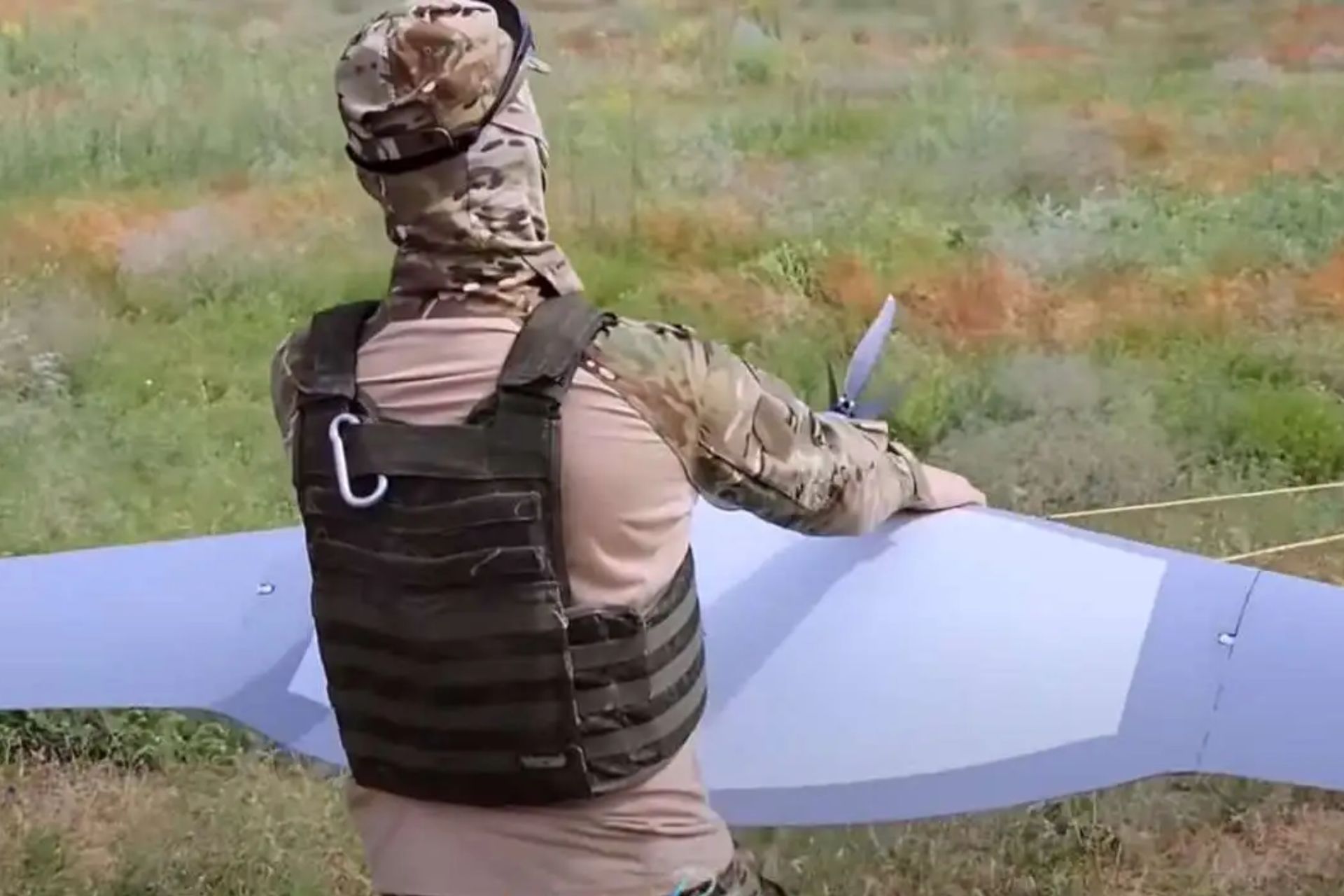Breaking News
Ukraine fears F-16 Falcons to become a sitting duck for Russian missiles.
Following the recent devastating losses of the Ukrainian Air Force, a Ukrainian legislator has expressed serious concerns about the future transfer of F-16 fighter jets from Western countries to Ukraine, fearing they might suffer the same fate as the Su-27 jets destroyed at the Mirgorod airbase.
Follow Army Recognition on Google News at this link

An F-16 plane is seen after it slid off the runway on Wednesday, May 11, 2022, at the Sioux Falls Regional Airport (Picture source: ERIN WOODIEL / ARGUS LEADER )
On July 1st, a Russian drone identified six Sukhoi Su-27 fighters of the Ukrainian Air Force openly stationed on the tarmac at the Mirgorod Air Base, home to the 831st Tactical Aviation Brigade, located about 150 kilometers southwest of the border in central Ukraine. Seizing the opportunity, a Russian Iskander ballistic missile was launched, resulting in the destruction of two of the valuable supersonic fighters and damaging the other four.
This incident could be one of the most costly days for the Ukrainian Air Force since Russia expanded its military operations in February 2022. Ukrainian Air Force spokesman Colonel Yuri Ignat confirmed the attack, which was widely reported by both Russian and Ukrainian Telegram channels. As a result of the attack, two Su-27s were destroyed and four others were seriously damaged due to cluster munitions.
The following day, on July 2, 2024, a Russian drone monitored the Ukrainian Poltava Air Base, located east of Mirgorod and 160 km from the border. After hours of surveillance by the drone, an Iskander missile struck, damaging a Ukrainian Army Mil Mi-24 attack helicopter.
Russian raids reveal vulnerabilities
Since last autumn, Russian raids on Ukrainian bases have intensified, resulting in significant losses for the Ukrainian Air Force. These attacks have so far destroyed two Su-27 fighters, two MiG-29 fighters, a Su-25 attack aircraft, and possibly a Mi-24 helicopter.
The increasing frequency and success of these raids highlight a crucial issue: the lack of effective air defenses, leaving Ukrainian bases vulnerable to Russian drone and missile attacks.
According to Ukrainian reports, a Russian drone loitered over the Mirgorod airbase for nearly three hours, gathering intelligence before launching an Iskander missile strike. The Ukrainian Telegram channel Sofa Assault Brigade expressed outrage and dismay at the drone's prolonged presence. An Orlan-10 drone was indeed flying over the town about five kilometers (three miles) away, directing the subsequent missile strikes.
Although the Sofa Assault Brigade contested the number of damaged aircraft claimed by the Russians, it acknowledged the troubling fact that the drone operated over Mirgorod for an extended period, targeting and recording the aftermath of the attack.
This raises a crucial question: why did Ukrainian air defenses not target the drone on either day?
The Russian drone might possess advanced radiofrequency, visual, and audio stealth characteristics, making it difficult to detect and target. One of the drones regularly used is the Albatros M5 flying wing.

Russian Unit displaying Albatros 5 with catapult system (Picture source: TASS )
The Albatros M5 reconnaissance drone, with a wingspan of 3.3 meters, can fly for 4.5 hours, at a maximum altitude of five kilometers, and with a range of 300 kilometers. It can be transported in a car or carried by one person, with flight preparations taking no more than 10 minutes. The Albatros's electro-optical sensors are ineffective in cloudy weather, but in our case study, this is insignificant as the weather was clear over Mirgorod on July 1 and 2 during the Russian strikes.
Could the F-16s meet the same fate?
The recent attacks on Ukrainian airfields over two consecutive days have prompted Ukrainian legislators to express serious concerns about the safety of incoming F-16 fighter jets.
Mariana Bezuhla, a deputy of the Verkhovna Rada (Ukrainian Parliament), raised these concerns on her Telegram channel, particularly addressing the Commander-in-Chief of the Ukrainian Armed Forces, Alexander Syrsky. Bezuhla criticized the lack of aircraft shelters at Ukrainian airfields and the overall state of air defense.
“You have not corrected the situation regarding the safety of our aircraft, the air defense,” Bezuhla stated, highlighting the urgency of addressing these vulnerabilities.

Crashed ukrainian SU-27 in February 2022 (Picture source: OSINT )
According to her, the introduction of the F-16s would not necessarily change the situation. On the contrary, they could become a new target for Russian strikes. Bezuhla wonders if the necessary infrastructure for these Western fighters has been adequately prepared.
These concerns are based on the harsh reality of the conflict. The destruction of two Su-27s at Mirgorod due to Iskander missile strikes underscores the heavy losses Ukraine has suffered.
Over the past nine months, Russian forces have destroyed at least five Ukrainian combat aircraft on the ground. Ukraine, already stretched thin, cannot afford such losses at this critical stage.
At the beginning of the war in February 2022, the Ukrainian Air Force had about 125 fighter jets, including Su-27s, Su-25s, and MiG-29s. However, 28 months of intense fighting have resulted in the loss of about 90 aircraft.
To compensate for these losses, Ukraine has sourced replacement MiG and Sukhoi jets from its allies and long-term storage, thus maintaining the operational capacity of its air force until the expected arrival of Western-supplied fighters: 85 Lockheed Martin F-16s and possibly a dozen Dassault Mirage 2000s.
The main concern remains, however, the vulnerability of these new fighters to Russian drone and missile attacks if they are left exposed. Ukraine has acknowledged this risk and is reportedly taking measures to prepare for the arrival of the F-16s by building underground warehouses and bunkers at its bases. Additionally, plans are in place to store some of these aircraft at foreign bases for security reasons. The effectiveness of these preparations remains to be seen in the coming weeks or months. The outcome of these efforts will impact Ukraine's ability to withstand current and future assaults by Russian forces.


























